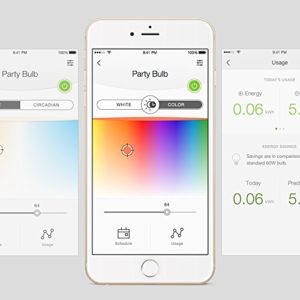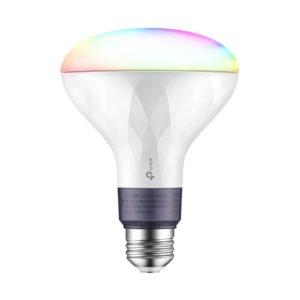It all started with an Echo.
My story begins with the Amazon Echo. Go read that other story for a review about those. This story is about how I elevated that useful gadget into a marriage saving, life saving, sanity saving ecosystem thanks to TP-Link. TP-Link is not as well known as Phillips or Belkin or GE, but for my money, they’re the best.

You see, the first thing I bought on my home automation journey was the TP-Link HS100. It was the first, and as the first, it came with the drawback that it ate up both of your outlets, unless you were smart enough to put a short extension cord between it and the outlet (a cheap fix, but annoying none the less). The reason I went with the TP-Link is that they decided to be the first on two fronts: Amazon Echo integration, and hubless design. Philips is more than happy to sell you their Amazon ready Hue system, so long as you also drop a load a cash on a hub that does all the actual work. It’s $60 and all it does is control your Philips Hue devices.
Take only what you need to survive!
Now, if you’re still rocking your Linksys WRT54g, then perhaps you don’t have a router capable of many connections. I on the other hand have a nice robust little Asus RT-AC68U router serving gigabit speeds wirelessly throughout my house, so why would I pay to put yet another router in the mix? Plus, what if that router doesn’t have the range to span my house? Would I have to buy another one?
I said to myself, “Screw that noise” and started scouring the review pages of the internet. TP-Link kept popping up. It was promising. They were known mostly for cheapish networking gear, and this seemed like a good fit. So I bought two, and instantly fell in love. Now, while it’s true that I just showcased the original smart outlet from TP-Link, they now manufacture a short form factor that only covers the plug it’s plugged into, and actually, you can get two if you want. The new HS105 is quite handy, but let me advise against getting them for controlling lamps, as they make bulbs I’ll get into later. Their new devices have expanded functionality that really puts control in your pocket.
There’s an Ap for that.
 The way TP-Link handles their devices is fully through the Kasa Ap for iOs and Android. Once you’ve put your device on your local wireless network, you can have your Echo (or Google Home or Apple HomePod) instantly discover it. Whatever you named the device in your app is how you handle that specific device. If you want to group devices together either the Kasa Ap, or your smart home speaker’s ap, will help you do that.
The way TP-Link handles their devices is fully through the Kasa Ap for iOs and Android. Once you’ve put your device on your local wireless network, you can have your Echo (or Google Home or Apple HomePod) instantly discover it. Whatever you named the device in your app is how you handle that specific device. If you want to group devices together either the Kasa Ap, or your smart home speaker’s ap, will help you do that.
As you can see in the screen caps of the ap, the bulbs are usually at least dimmable, but often tunable as well. What I mean by tunable is that you can either tune a white bulb to various warmths/coolnesses of light, or tune full spectrum bulbs to whatever color you want. You can even set them to follow a circadian rhythm that shines the most pleasant temperature of white based on what time of day it is.
I’ll admit, I bought one of the party trick multicolor bulbs for my collectibles closet. It’s just too fun being able to set it to whatever color I want!

Anyway you want it, that’s the way you need it!
All of this is voice controllable. For the shoot above, I was able to say “Alexa set Closet to Purple, 40%.”
Just like the computer on the Enterprise, she said “Ok” and my bulb changed. That image at the top of the page was controlled by commanding my Echo to set Green, Orange, Daylight and Magenta. It’s a neat party trick, but it really pays off upstairs in our living room. When we’re watching a movie, I can just tell Alexa to drop my lamp to Warm at 30%. The ever-so-slightly orange tint reduces low light eye strain, while the dim eliminates noticeable glare on the television.
 Speaking of my living room, TP-Link is also the first brand name player to make an 80w Equivalent bulb. The TP-Link LB230 is one of the brightest smart LED bulbs you can buy, and although they had to widen it to make room for more emitters, it’s still close enough to a standard bulb’s form factor that you don’t notice a different in a floor lamp.
Speaking of my living room, TP-Link is also the first brand name player to make an 80w Equivalent bulb. The TP-Link LB230 is one of the brightest smart LED bulbs you can buy, and although they had to widen it to make room for more emitters, it’s still close enough to a standard bulb’s form factor that you don’t notice a different in a floor lamp.
You can schedule on/off times whenever you want, or set them to a randomized away mode. Some even include power usage tracking so you can see how much money you’re saving by going LED.
All in all, I have yet to find a real complaint about my devices that weren’t solved by proper wifi coverage. We now have four outlets and six bulbs doing various tasks throughout the house (including our Christmas tree!)
Pros:
- Excellent performance, luminescence and quality.
- User friendly control app.
- Seamless Smart Home Voice Control integration.
Cons:
- Slightly longer than normal 60w equivalent bulbs make them snug in ceiling fixtures.
- Original outlet ate up two outlets (solved).
- Pricey? If they last the way normal LED bulbs are built to last, it’ll pay for itself in time.
Verdict:
I am extremely happy with my TP-Link home gear, but your needs may vary. If you want home automation, and you’re sure you’ve got your Wifi sorted, then TP-Link is the way to go.



I have an hs100! It’s nice, but yes, it is an outlet hog. It took some rigging to get it to work with Smartthings so I can turn it and another Smarttings outlet on for Christmas. This year Google home works with it directly, but I still want to use it in Smartthings.
Thanks for sharing. About the TP-Link HS100 — “it came with the drawback that it ate up both of your outlets” — what do you mean by that? And what’s the cost in the US? In Bulgaria is exactly $43. Is that a bargain or it’s not worth it?
I have a mechanical timer but this things looks way better. And I’m super satisfied with TP-Link. All my routers and switches are TP-Link, and are not some overkill tech, just cheap stuff that works like a charm.
Thanks for the shout out in your article btw.
In the US the device was so big that it blocked the second outlet. The new ones don’t do that. Glad to give you some props ^_^
I have a few big electrical multi-outlets with a few sockets so that won’t be a problem.